Updated August 7, 2023
Raccoons are adorable, smart, and precocious, and sometimes these attributes get them into trouble. Not that raccoons think “I am going to get in this trash can just to be bad.” They are looking for an easy meal but we may think that’s bad behavior!
This article will tell you everything you need to know about raccoons including how smart they are and how to humanely keep them out of your attic, away from your birdfeeders, and out of your chicken house.
What Are Raccoons?
Raccoons go by many nicknames including trash pandas, coons, and ringtails.
They have a very distinctive look. The mask on their face makes them look like little bandits. The mask helps to deflect light and allows them to see better in the dark. Just like when football players put black under their eyes in a game.
They also have very dexterous paws that they use in all the same ways you use your hands. The raccoon also has a fluffy tail with black rings on it.
Environmental Impact
Raccoons are considered nuisance wildlife in Kentucky, Wisconsin, and many other states by the Department of Fish and Wildlife. However, raccoons play an important part in the ecosystem of our state.
Raccoons Help Their Ecosystem
Raccoons distribute seeds from the fruit and nuts they eat. They also eat smaller animals that are pests such as mice and even cockroaches.
They also dig in the dirt looking for food helping to regenerate plants and aerate the soil.
Raccoons love wasp larvae and are valuable for controlling invasive wasp species.
Species Variation and World Domination
We all know that raccoons want to dominate the world! Raccoons are native to the United States and found in a variety of ecosystems. They are part of the Procyonidae family. Other animals in this family are coatis, kinkajous, and ringtails. These animals all live farther south in Central and South America.
Initially, raccoons were thought to be related to bears or possibly dogs and cats. Raccoon remains date back 6 million years to the Miocene Era where they do share a common ancestor with the bear.
Interestingly raccoons get both dog and cat diseases. For example, they can get both cat and dog strains of distemper or parvo.
Raccoons have spread throughout Europe and Asia through the pet trade where they have escaped or have been released when they made an unsuitable member of the household.
This map from the National Geographic Society shows how the raccoons are adapting and populations are spreading throughout the world.
Lighter colors show native habitat and the darker colors show expansion of territory. The pink is where they have been invasive due to the pet trade or introduction. https://www.nationalgeographic.com/animals/2019/07/raccoons-expanding-range-climate-change/
SubSpecies
There are 22 subspecies of raccoons some living only on remote islands in the Caribbean Sea.
Many like the Bahamian Raccoon were isolated on islands and developed unique characteristics. This raccoon population is isolated to New Providence Island in the Bahamas. The smaller size, which is believed to be insular dwarfism, a more delicate skull, and smaller dentition make these animals unique.
Size and Habitat
Raccoons grow up to two feet long, not including the tail and weigh and average of anywhere between ten and sixty pounds.
The size of the raccoon varies by where they live. They are the most diverse mammal in terms of size.
Bergmann’s Rule
Have you heard of Bergmann’s Rule? Carl Bergmann was a German biologist who said that within a large population the smallest animals will live in southern regions and the largest where it is cold.
This applies to the raccoon. In sunny Florida, the average raccoon size is twelve pounds, about the size of a cat. In Michigan, the average is twenty-three pounds, about the size of a small dog.
In the upper midwest, the raccoon needs to be bigger so that it can withstand the harsher weather and survive during a long winter with less food.
Coons are not very fast runners. They have a stocky body with comparably short legs. They can run at about 15 mph but only for short stretches. They are good swimmers and can swim long distances but only at about three miles per hour.
Senses
You have probably observed how tactile raccoons are. They love to touch things and explore with their hands. In fact, their hands are very important in their perceiving information. The section of the raccoon’s brain called the cerebral cortex is very specialized in order to interpret tactile (touch) information.
Raccoons see well but are mostly color blind. Studies show that they see green light but not other colors in the spectrum. They do not see well far away.
Coons have a good sense of smell. They are known to mark territory using urine and feces. They also have anal glands which secret odors.
In the wild, raccoons often have community bathrooms. This is where the “get to know one another” in person and by scent.
Hearing is a well-developed sense and raccoons can hear the movement of earthworms underground.
Check out my presentation below on raccoons and subscribe to my YouTube channel for lots of wildlife videos!
Intelligence
Raccoons are REALLY smart and have a long memory. In scientific tests, they have demonstrated problem-solving skills.
Raccoons can open a variety of locks. Furthermore, they remember how they did so and can complete the task faster the next time.
They have a high density of neurons in the cerebral cortex which is similar to primates.
French neuroscientist, Stanislas Dehaene, found that raccoons can sort numbers up to four and distinguish closed boxes with between 1 – 4 grapes inside.
Raccoons have a very high IQ and test just below monkeys in intelligence.
One fun experiment was done to compare city raccoons to country coons. The psychologist and biologist, Suzanne MacDonald, used radio collars on raccoons and charted their behavior under different circumstances.
She found that the raccoons in Toronto better-navigated streets and intersections and were more skilled at opening trash cans than their rural counterparts.
Living Habitat
Raccoons traditionally have lived in forested areas throughout the country. They are very adaptable and now live in a range of areas including both urban and rural. Raccoons like to be in areas where there are trees to climb.
Raccoons will often gravitate to areas they perceive as safe and sheltered such as barns and attics of houses.
Raccoons’ territory is dependent on where they live. In a city, the territory may cover three or four acres. In a rural area, the territory may cover seven or eight acres. This equates to less than half a mile to a ten-mile range.
The size of the territory will vary based on the amount of food and competition with other animals.
What Do Raccoons Eat?
Raccoons are omnivores and eat both plants and animals.
Raccoons love fruit and will eat a variety of fruits available in their habitat including wild raspberries and blackberries, cherries, apples, persimmons, plums, and wild grapes.
They eat nuts including acorns, beech, and walnuts.
Raccoons especially like to eat water animals such as minnows, frogs, and crawdads and can frequently be seen “fishing” in creeks and small ponds. They will also eat insects, worms, and bird eggs as well as reptile eggs.
In addition, today’s coons have acquired quite the taste for garden vegetables such as watermelons and corn where they can be a nuisance to farmers.
Raccoons do not normally hunt mammals such as squirrels and rabbits except when food supplies are low.
More on keeping coons out of your garden and chicken coop below.
Wash Your Hands Before Dinner Sonny!
We all know that raccoons appear to be washing their hands – or their food before they eat it. In fact, their Latin name, Procyon lotor, means washer. Many theories have come from this behavior including thinking the raccoon needs water in which to swallow because they don’t produce enough salvia.
The real reason gets back to the sense of touch we just talked about. Coons learn information by touching things. They also use their paws to break apart their food so they can eat it.
Captive raccoons douse their food more often because they have greater access to the water dish. A raccoon in the wild, who has filched an egg from a nest, does not go find water in which to feel or play with the egg. They simply find a safe place and eat the egg.
Raccoons do love water and enjoy playing in a creek, pond or water dish. They do this for fun not necessarily because they want to clean themselves or their food.
Top Dog In Their Niche
Humans have exterminated or reduced many of the top carnivores in their ecosystems. Animals such as cougars and wolves have been reduced and foxes, bobcats, and coyotes are much less common. In some areas, the Great Horned Owl preys on babies.
This has allowed the raccoon to dominate in their niche as the largest predator and have an increase in population.
Whenever humans reduce a predator population through hunting or habitat loss the ecosystem becomes unbalanced. Predators and prey are both important in the habitat and both perform an important role.
Coyotes are another wild animal that has adapted to urban areas. Check out my popular video on “God’s Dogs”.
Socialization
Raccoons are social animals. Some live in family groups. It is common for related females to live in the same area and meet up at feeding or nesting locations.
Often young males will stay together. Sometimes a few males will band together to keep unwanted males out of their breeding territory.
In winter raccoons will often share dens to cuddle and keep warm.
Reproduction and Lifespan
Raccoon mothers are some of the most attentive mothers in the animal kingdom. They spend a lot of time teaching their youngster’s survival skills. In addition, studies have shown that a mother raccoon will teach her baby skills that pertain to their area.
For example, in urban areas, she may show her children how to safely cross the street or climb on slippery gutters.
Raccoons mate in the winter months of January, February and March and have a gestation period of 65 days. The babies are called kits and are born in the spring. Liters are typically two to four kits. Larger litter will occur in areas where the weather is harsher or hunting has taken a toll on the population.
Babies are born deaf and blind and totally dependent on mom. They are about four inches long and only weigh a couple of ounces. They are light brown and have the tell tale mask already. At about three weeks the ears and eyes open.
By six or seven weeks the kits weigh two or three pounds. At this age, they begin to explore outside the den.
Kits stay with their mother the first six months of their lives. In some instances, they do not leave the mother until the following spring and young females may stay in the family unit.
In the wild raccoons only live about three years. The two biggest causes of death are predation and being hit by a car.
In captivity, they may live up to twenty years.
Rescue and Rehabilitation
Many people love to hate raccoons. Many people can’t resist those adorable faces. I received more phone calls about raccoons than any other wildlife.
This poor baby was hit on the road. We took him to our vet, Dr. Glaza, who determined he had a broken foot. His foot was splinted and he had to wear the “cone of shame” to make sure he did not take the splint off.
Happy ending. Splinter, as we called him, made a full recovery and was released on Fox Run in Kentucky.
Many raccoon kits are orphaned due to humans trapping the mom and killing her before they realize that she has kits. Often this is because she has decided the attic or shed looked like a nice dry place to give birth.
Check out the section below on keeping your property raccoon free.
Sometimes mom is hit on the road and killed and you may see kits running around the body or over the road.
Sometimes you go to the trouble to call a rehabber only to be told they are full. Please remember that rehabbers are volunteers and are on a budget.
It costs about $250 - $350 PER Raccoon and yes those expenses add up fast. That just covers food and vaccines. When babies have medical problems the costs escalate with paying the veterinarian and the cost of medicine. Please see our Donate Page to learn how you can “Help Us Help Them” our program to get much-needed supplies to wildlife rehabilitators.
Raccoons are one of the longer rehabs that rehabilitators take in. Raccoons easily take five or six months of work. This is because in the wild the mother raccoon takes so much time teaching them survival skills.
We cant replace mom but we still make an effort to teach skills so that our raccoons are ready to survive and be healthy. Climbing trees and looking for minnows are activities that we do with our kits.
Diseases/Zoonoses
Raccoons do carry a lot of diseases. Some of which can be transmitted to humans.
Raccoon Rabies
The most formidable disease is rabies. Rabies is a virus for which there is no cure. According to the Center for Disease Control (CDC) “There were 13,142 raccoons tested for rabies in 2017, of which 1,275 (9.7%) were confirmed positive. This represented a 9.1% decrease, compared with the 1,403 rabid raccoons reported in 2016”.
A more recent study stated that “During 2021, 54 US jurisdictions reported 3,663 rabid animals, representing an 18.2% decrease from the 4,479 cases reported in 2020”.Of that total raccoons made up 1,030 animals or 28.1%.
Does this mean we should run under the covers or kill all rabies vector species? NO!
Most of the reported animals have not bitten a human. Often they were found dead from the disease and lab tested to see if it was rabies that killed them.
Just like we prevent rabies from happening in our dogs and cats we can prevent it in wild animals. Read my article “Why We Vaccinate Wildlife” to learn more.
Raccoon Roundworm
Most mammals get roundworms. You have probably treated your family pets for them. Raccoon roundworm which is the species (Baylisascaris) is particularly bad. This variety of roundworm can affect your dog and you.
Human infections are not common but they can be life-threatening as the parasite can invade the eyes and the brain of humans.
Make sure you wear gloves if you are cleaning out a raccoon infested area and disinfect thoroughly. If the area if fireproof the only sure way to kill the worms is with a torch.
Vet Tech Ame! Here working with my vet staff to do surgery on a raccoon.
Hunting and Trapping
Raccoons have long been hunted for their fur. Think Davy Crockets’ famous coon skinned cap. Raccoon coats were a status symbol among young adults in the 1920s. One reason the raccoon is well established in Europe is that raccoons were imported there to start “fur farms”.
Most states allow raccoons to be hunted for their fur or due to nuisance animal rules. Sadly trapping is a very inhumane way to kill an animal and may leave the raccoon maimed or suffering a long agonizing death.
In Kentucky and Wisconsin, raccoons are allowed to be hunted from October through February and trapped from November through February.
Threats to Livestock or Property
Raccoons have a bad reputation for getting into garbage cans, attics, and barn lofts. They also can do damage in the garden. In addition, they will kill poultry.
Keep in mind that raccoons were here first and they don’t recognize that your bird feeder or trash can was not set out for their personal mealtime.
Homeowners need to be proactive so that raccoons do not destroy their property. It is not the raccoon’s fault that it uses its brain to basically steal from you. The raccoon has lost its habitat and is just trying to adjust to the human population.
The best response you can have is tolerance. The next best response is protection. Quite frankly, killing a raccoon will not solve your problem. A new raccoon will step into the “territory” and you will not have resolved your issue.
It is illegal and inhumane to relocate wild animals. Many states have fines if you are caught. Taking them off to the woods is not solving the problem.
Secondly, raccoons are territorial and will not accept a new raccoon into their midst. In addition, the relocated raccoon does not know where food sources are in the new area and may become a nuisance to other people.
Check out my video on raccoons below!
Preventing Raccoon Conflict
There are many things you can do to prevent conflicts with raccoons.
Garbage Cans
Garbage cans need to be securely fastened. Raccoons can undo most snap lids, and bungee cords and otherwise destroy cheap plastic cans. You can build a secure box around your garbage cans.
Stainless steel cans are much more secure than plastic cans and easier to clean. However, cities often have specific cans residents must use. If needed you can buy a secure lid brace.
This is what I recommend for people having issues with wildlife getting in garbage cans. Works for dogs and coons but not bears
You can also purchase a wildlife-proof garbage can. These are becoming mandatory in many areas.
Compost can also attract wildlife. If you are in an urban area place food compost in sealed compost containers.
Attics and Crawlspaces
As our homes age and weather, they invariably develop structural cracks or separations. Every fall you should check your home for ways that wildlife may enter. Check under and around gutters, eves, soffits, and fascia where separations often occur.
Before you block off holes you should verify that no animals are living there. Take some wadded-up newspaper and place it in holes or separations. If the newspaper gets knocked out you know that you have an animal that needs to be humanely evicted first.
There are many exclusion devices to help keep wildlife out of your home.
Chimney Caps
Chimneys are a popular place for both mammals and birds to take up residence. Installing a chimney cap will keep wildlife out.
If you do discover wildlife in your chimney do not try to smoke them out. This will just kill any babies who can not escape the smoke. And not to be gross but then you will have decaying animals in your chimney.
Before installing a chimney cap please verify that no animals are in the chimney. Favorite spots are on the damper and smoke shelf or in the venting.
Before exclusion, use a flashlight from the bottom and top to check for animals. If this is not an easy DIY project call a chimney sweep to help you check, clean, and install a chimney cap.
Getting Rid of a Mom and Babies During Spring
So it’s spring and you have discovered you have a family living in your attic. Please be considerate of those young lives. If you wait a few weeks the kits will mature and mom will start taking them out to find food.
At that time you can go seal up her entrance. You may want to use a low-cost game camera to verify when they are coming and going. If you seal off the entrance from mom and leave the kits inside she will go ballistic and tear up your house trying to get to her babies.
Make your home an unpleasant place to live. Use noise such as a radio tuned to a talk show or rags soaked in ammonia. Then give the mom several days to relocate the babies. After the family is gone you can seal up the place where they enter your house.
Nuisance wildlife control organizations make a lot of money off people who do not take basic precautions. Take the time to secure your property and avoid unwanted conflicts.
Many wildlife removal services will tell you they are humane. This is often a lie. In fact, some states require that they euthanize rabies vector species such as raccoons and bats found in people’s homes. Look into your state’s laws.
Raiding Gardens
Raccoons do love fresh vegetables and fruits, especially corn and watermelons.
I used to recommend a radio on a talk show but with raccoons becoming more urbanized this does not work so well. Raccoons have become desensitized to human voices.
Wire fencing works well if it has a top. I have successfully used a six-foot tall wire fence with 2x2 openings, around my garden areas since I also want to keep out my goats and white-tailed deer. In garden areas with melons, I run heavy-duty deer netting across the top to keep out birds and climbing animals such as coons.
Obviously, that works in smaller garden areas. What if you are trying to keep raccoons out of a larger cornfield?
Electric fencing will deter raccoons. Use two strands around the perimeter. One strand needs to be six inches from the ground and one strand needs to be twelve inches from the ground. Remember to weed eat along the ground since weeds will short out the lower strand.
Interested in growing corn. Read my article Growing the Best Corn in Zone 6B.
or check out my video!
Subscribe to my YouTube channel for organic gardening and wildlife videos!
Keeping Raccoons Away From Birdfeeders
Don’t hang bird feeders from trees.
Use a pole-mounted birdfeeder stand that is at least 8 feet from any branches or overhangs. Coons can climb from a tree or building onto the feeder.
Read my article CHOOSING THE BEST BIRD FEEDER to help you decide what bird feeder is right for you.
They will try to climb up the pole. You can purchase a squirrel baffle to add greater security against raccoons and squirrels.
You can also easily make a baffle. Use at least a 1-inch black steel pipe for the pole so that it is very sturdy. Then place a 4-inch pole over your pole so that it covers the lower half. The outer pole can be a lightweight dryer venting or aluminum.
This pole will be loose and shaky and make it hard for the coons to get a grasp and climb up it. Mount that pole about 6 inches off the ground and use wire to “hang” it so that it will move. This will also deter squirrels.
Some people recommend either greasing the pole with oil or wrapping it with barb wire. Neither works. The grease can harm the birds and the raccoons learn to navigate the barbed wire.
Putting your bird feeders away at night in a secure location since the raccoons are primarily nocturnal ( not always!) will also protect your bird feed.
You can also purchase a raccoon baffle like this one https://amzn.to/2Rtvh0p
Improve Habitat For Wildlife
There are many things you can do to develop a natural habitat for wildlife. By offering them the things they need – water, food, and shelter – you can encourage them to live naturally in your yard or farm.
I worked with David at National Wildlife Federation. This is a great book on making your yard willdife friendly.
Pets
Raccoons do not make good pets. They are smart and mischievous. In addition, when they become sexually mature they often become like the stereotypical teenager and are very cranky. Raccoons do bite and lash out when they feel cornered or threatened.
A raccoon is not a domesticated animal. They are always going to want to be free and live the way their instincts are telling them. In addition, in many states including Kentucky, it is against the law to keep raccoons as pets.
There are some famous pet raccoons. President Calvin Coolidge had a pet raccoon named Rebecca. She was actually sent to the White House in 1926 to be dinner for the president. Gracie Coolidge rescued her from that fate and she lived in the White House. Apparently she loved the annual Easter Egg Roll. That sounds like a raccoon, doesn’t it!
"We had a house made for her in one of the large trees, with a wire fence built around it for protection. We kept her chained when out of doors, but in the house, she had her liberty. She was a mischievous, inquisitive party and we had to keep watch of her when she was in the house. She enjoyed nothing better than being placed in a bathtub with a little water in it and given a cake of soap with which to play. In this fashion, she would amuse herself for an hour or more.
Literature/Folklore
The word raccoon came from the Powhatan Native American term aroughcun and was recorded by John Smith of the Virginia Colony. Symbols of the raccoon are found in the Mississippian culture of the Mound Builders
The raccoon is a representative of secrecy and disguise. The mask is believed to allow him to transform.
There are many Native American stories about the raccoon who is often justifiably seen as a trickster. Azeban is a benign trickster Raccoon from Abenaki mythology who is always looking for food.
Contemporary pagans consider the raccoon to be a positive spirit animal that symbolizes curiosity, intelligence, courage, resourcefulness, assertiveness, and questioning.
The National Wildlife Federation has Ranger Rick, a raccoon that teaches children about wildlife. They have a great kids magazine called Ranger Rick for children ages 7 – 12.
I LOVED this magazine as a kid and still loved it when I subscribed for my children
Author, Ame Vanorio is an author and director of Fox Run Environmental Education Center. She teaches classes locally and online about organic gardening, nature education, and wildlife conservation. Ame recently moved from Kentucky to Wisconsin and is busy exploring all the new wild areas, volunteering, and writing books.









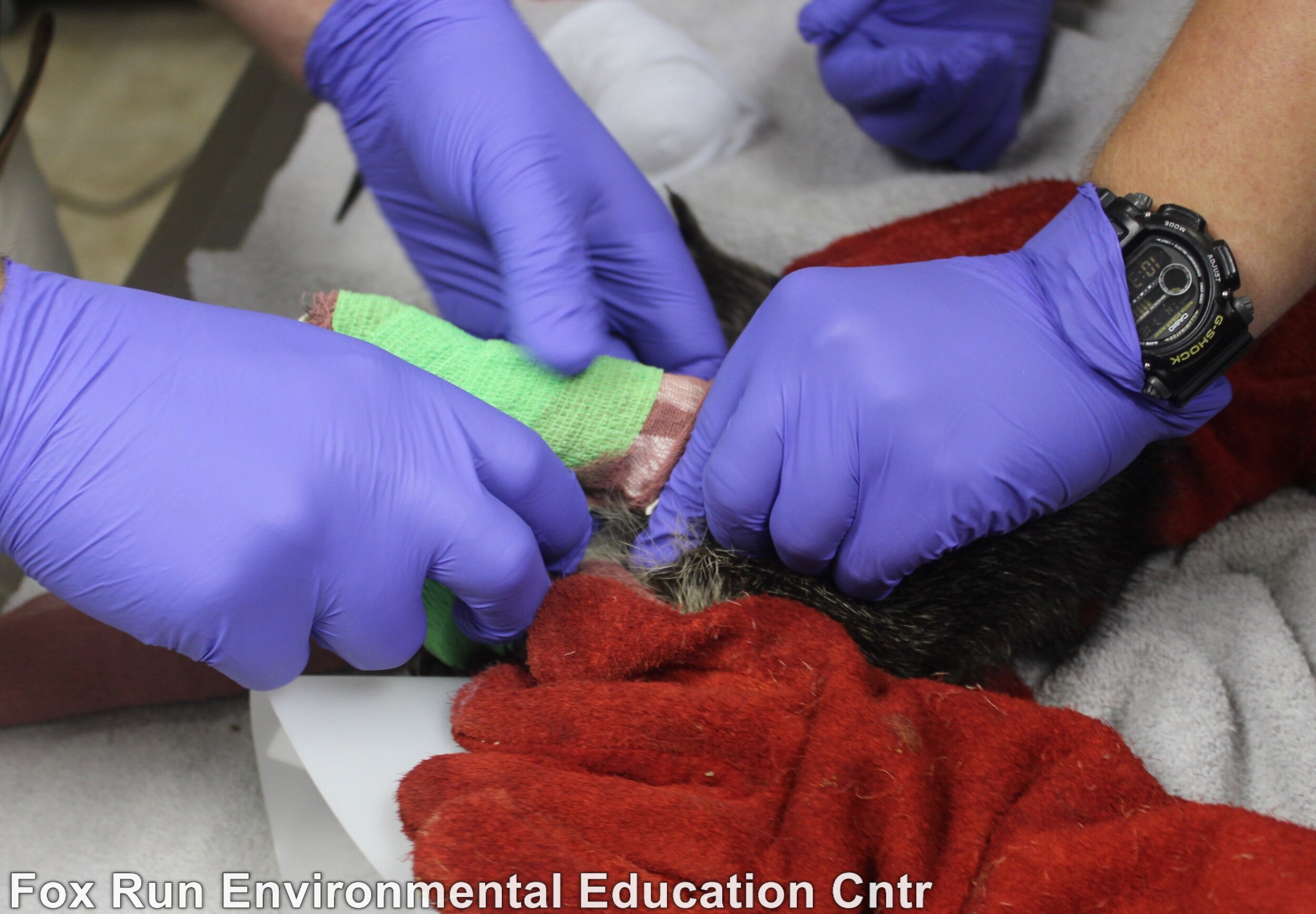
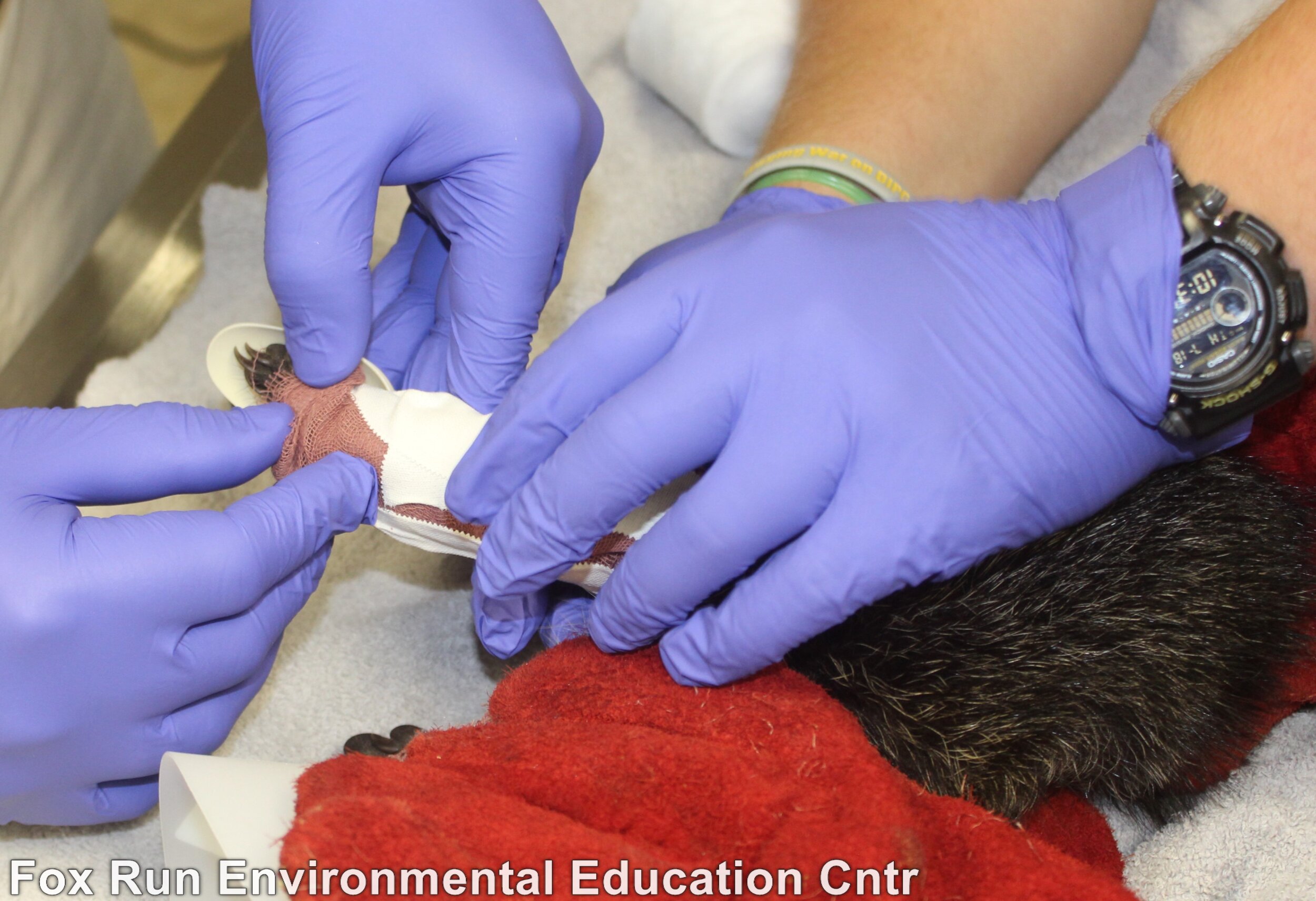
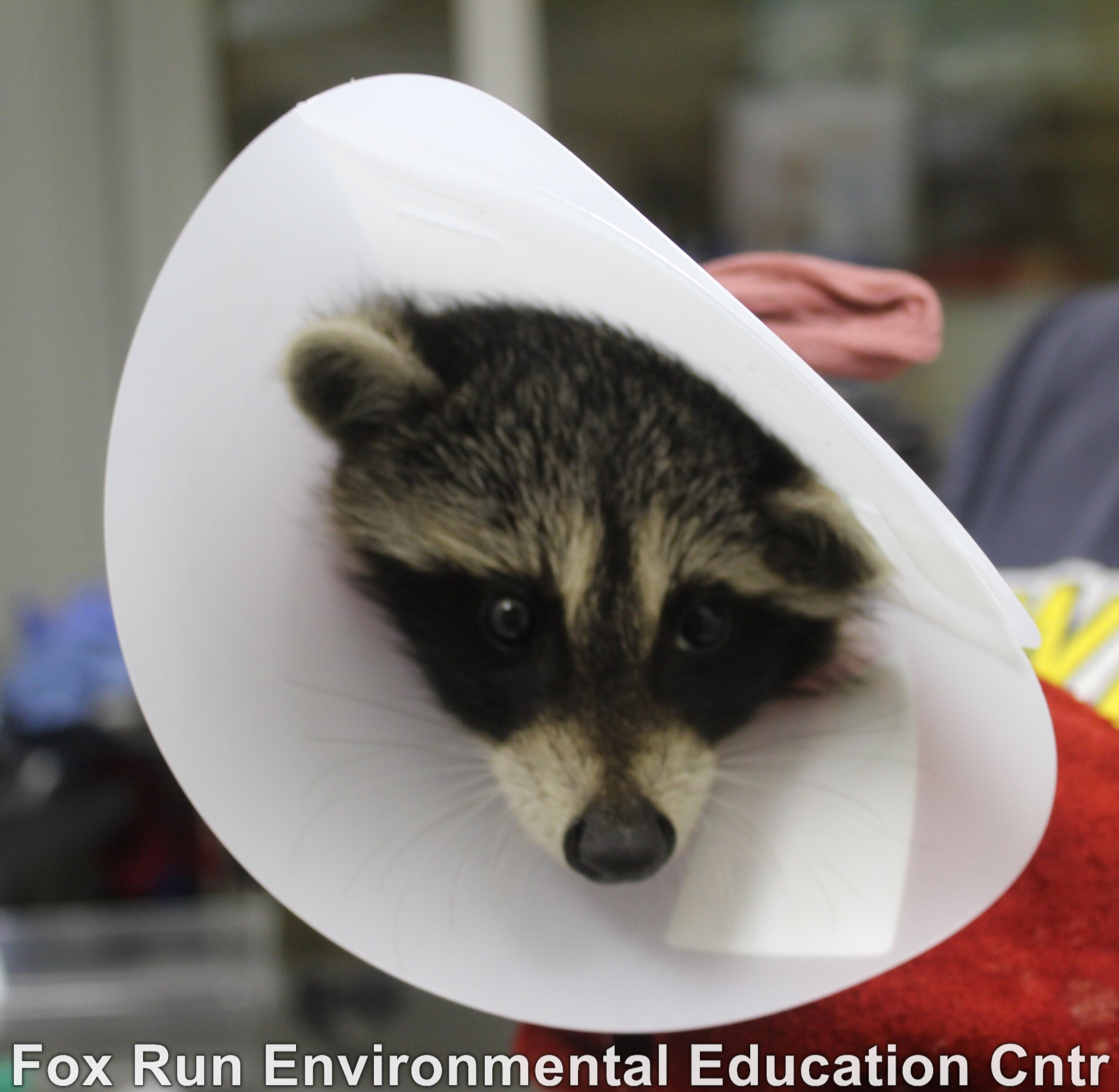
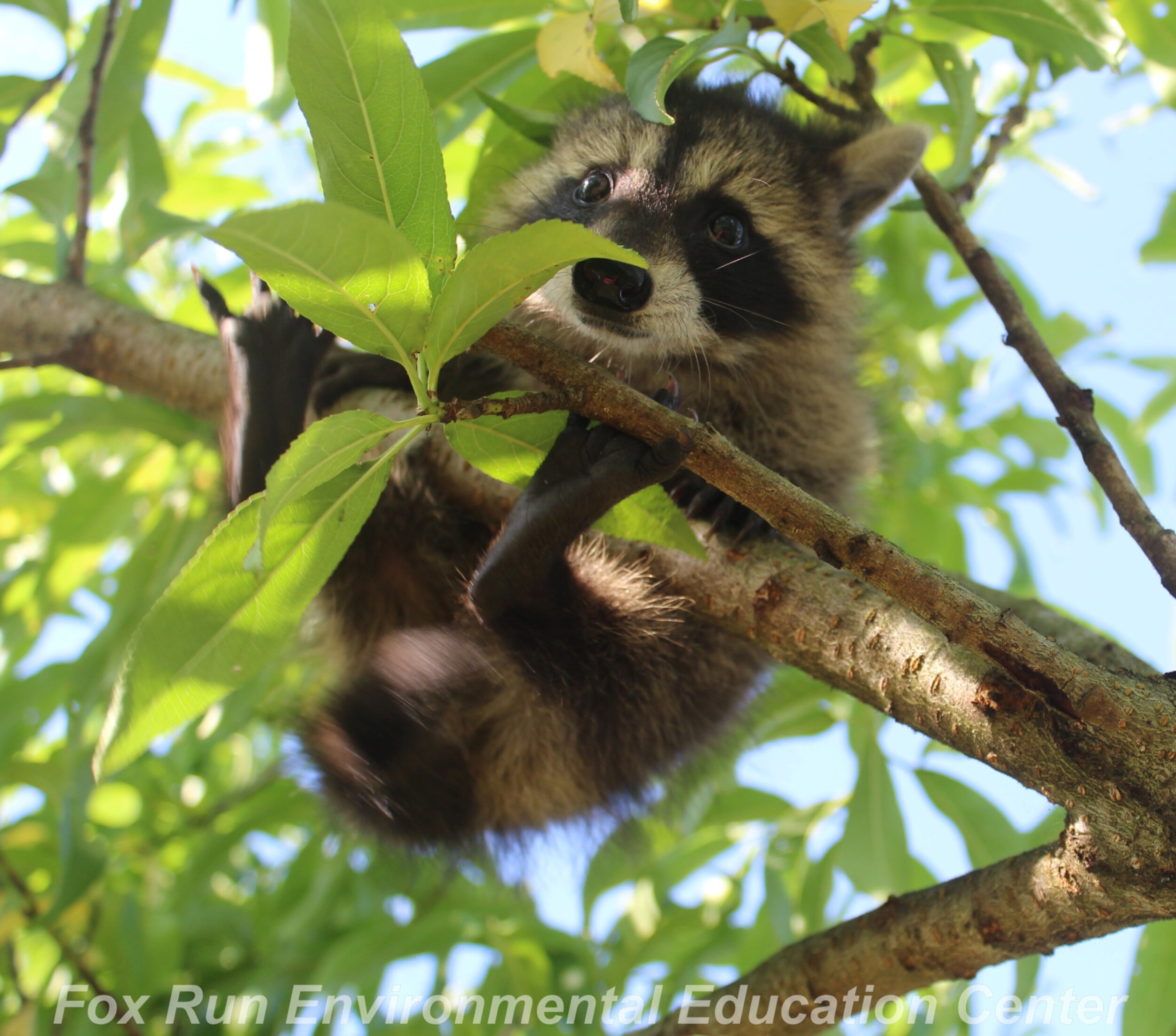
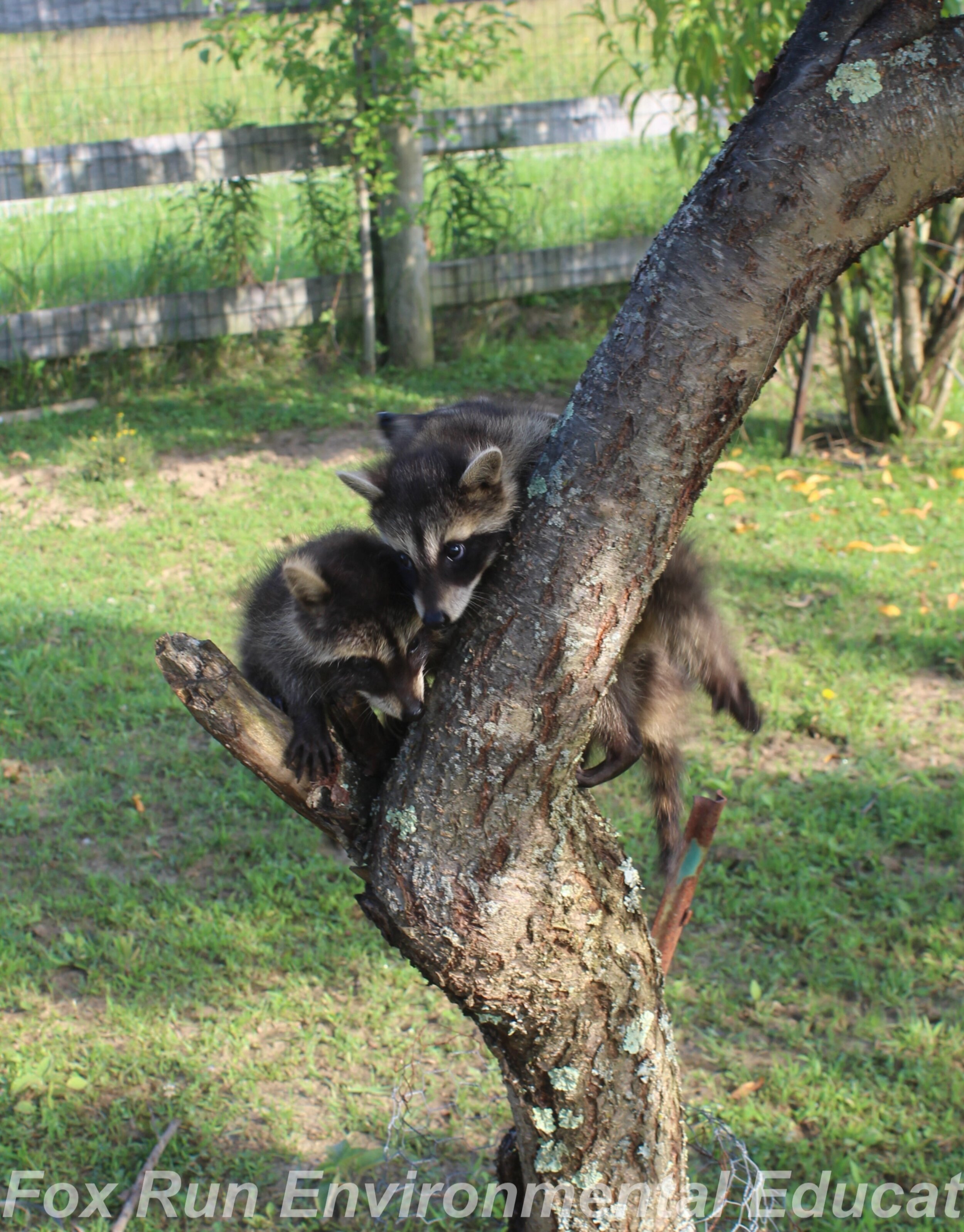
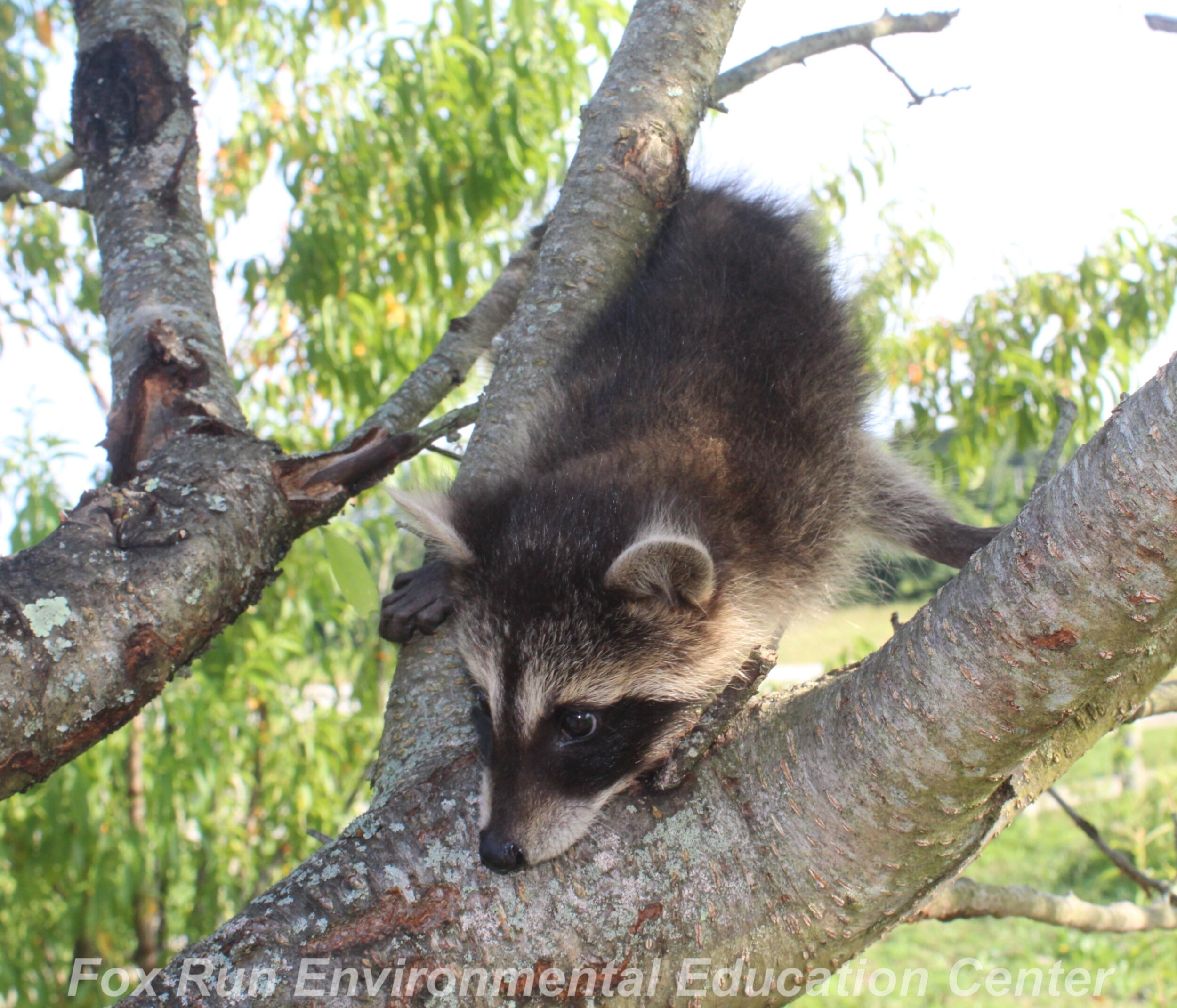







Wildlife rehabilitation is the rescue and care of injured and orphaned wildlife. Wildlife rehabilitators play an important role as conservationists and humanitarians.
Are you interested in becoming a Licensed Wildlife Rehabilitator? Keep reading as I am going to give you first-hand knowledge based on twelve years of personal experience on what it takes to become a licensed wildlife rehabilitator.